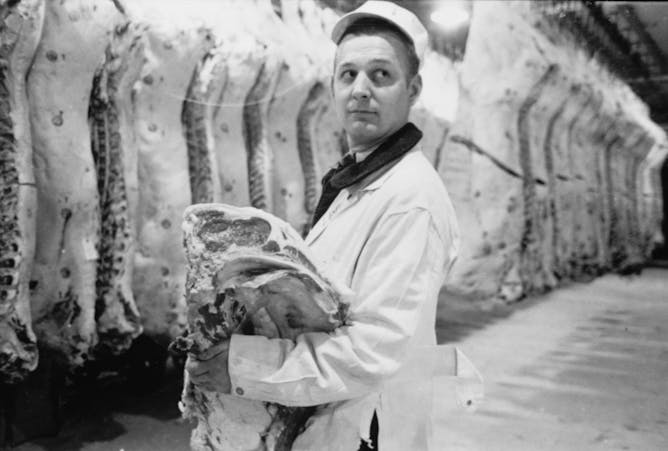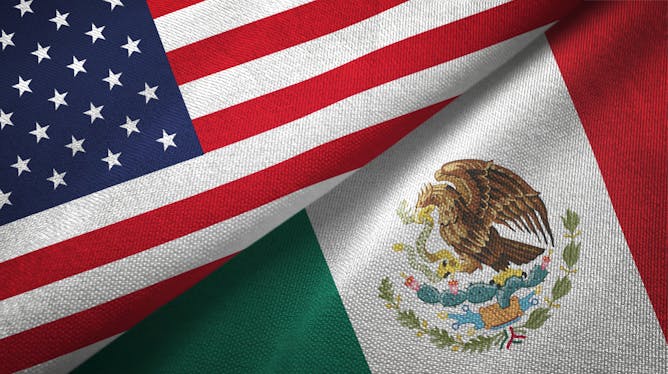|
For lots of Americans, the Independence Day long weekend means celebrating with friends and family at cookouts. Grillmasters at BBQs I’ve attended have been flipping hot dogs, hamburgers and a few veggie burgers – tasty, but pretty standard fare.
Future cookout menus might be a bit more exotic, as researchers work in the lab to grow animal cells into meat people can consume. So far, they’ve been able to cultivate blobs of cells to turn into a very expensive burger or two. As carnivores wait for commercialization of this “cultured meat,” Tufts University bioengineer Natalie Rubio writes that scientists are taking on the next, tougher challenge: “growing structured
cuts of meat like a steak or a chicken cutlet.”
This week The Conversation launched a global podcast series marking 50 years since the first moon landing in July 1969. “To the moon and beyond” investigates what humankind learned by visiting the moon five decades ago and what the next five decades of space exploration may hold.
And if space isn’t your thing, check out other recent stories on how a new Dalai Lama gets picked, the American minors living in Mexico or what the heck “personalized learning” means.
|

Meat of the future might be quite different from meat of the past.
Stanley Kubrick, photographer, LOOK Magazine Photograph Collection, Library of Congress, Prints & Photographs Division, LC-USZ6-2352.
Natalie R. Rubio, Tufts University
It's relatively easy to grow a bunch of animal cells to turn into a burger. But to grow a steak made of cultured meat is a trickier task. Bioengineers must create organized, three-dimensional tissues.
|

Tibetan spiritual leader the Dalai Lama sits on his ceremonial chair at Tsuglakhang temple in Dharmsala, India.
AP Photo/Ashwini Bhatia
Brooke Schedneck, Rhodes College
Winner of the 1992 Nobel Peace Prize and one of the most recognizable faces of Buddhism, the Dalai Lama has turned 84 and the question of a successor is pressing – and controversial.
|

Children in this group are growing up with roots in both the U.S. and Mexico.
Aleks_Shutter/Shutterstock.com
Claudia Masferrer, The College of Mexico, A.C.; Erin R. Hamilton, University of California, Davis; Nicole Denier, University of Alberta
Between 2000 and 2015, the population of U.S. citizen minors living in Mexico more than doubled. Who are the kids living on the other side of the border?
|
|
-
Nell Haynes, Georgetown University
The more they fight, the more popular they become – and the more pushback they receive.
-
Penny Bishop, University of Vermont
Throughout the nation, parents and students are pushing back against personalized learning. An expert on the different ways that students learn explains what's behind all the fuss.
-
Katharina M. Busl, University of Florida; Carolina B. Maciel, University of Florida
Consciousness has long been debated, particularly in the decades since devices have been used to keep people alive after brain injury. A new study suggests that some people can "wake up" after injury.
|
|
Global podcast from The Conversation |
-
  |
Martin Archer
Queen Mary University of London
|
 |
Bonnie J. Dunbar
Texas A&M University
|
 |
Daniel Brown
Nottingham Trent University
|
 |
John M. Logsdon
George Washington University
|
| |